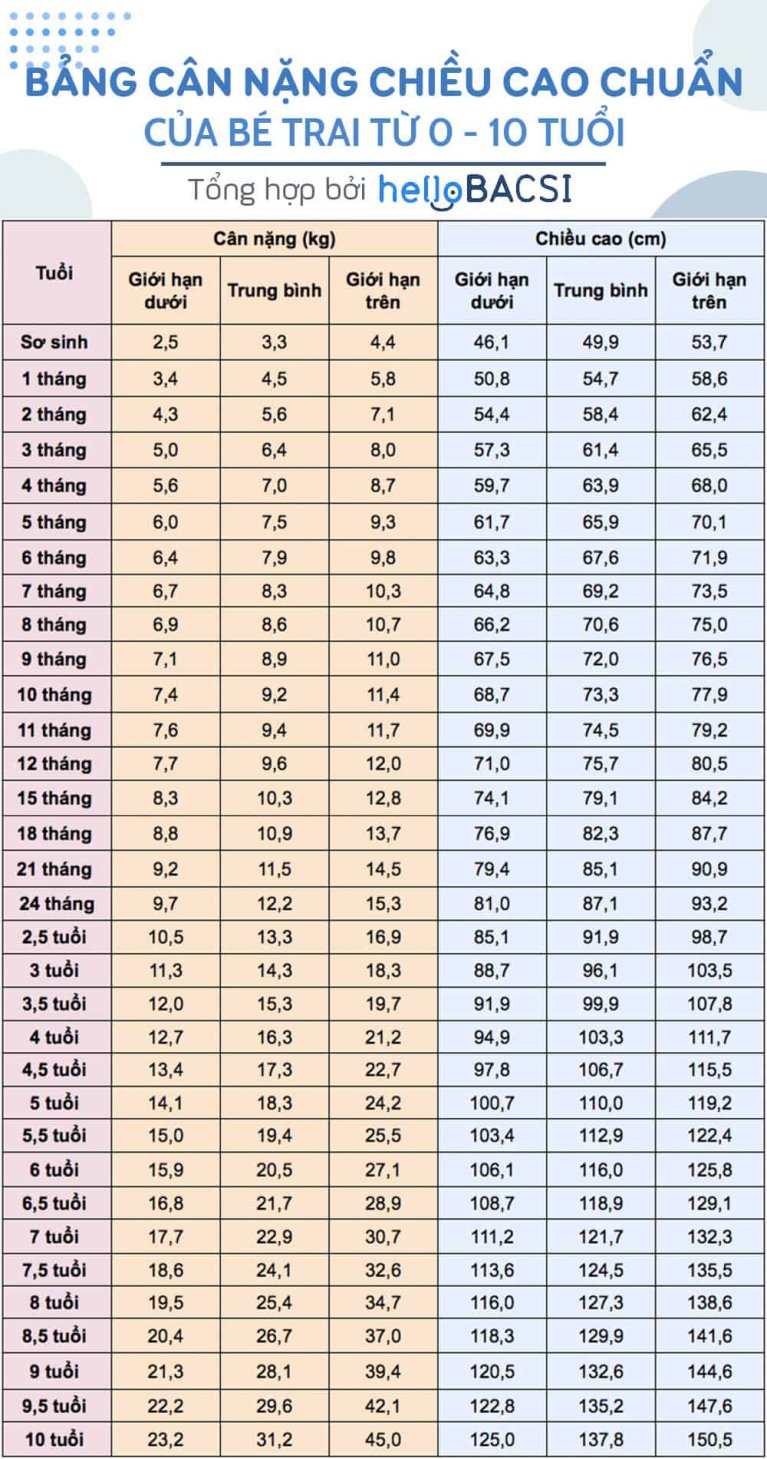[foxdark]
[Chiều Cao Và Cân Nặng Của Bé Gái 2 Tháng Tuổi]

[Executive Summary]

This article delves into the typical height and weight of a 2-month-old baby girl. We will discuss the factors influencing these measurements, provide a comprehensive overview of the growth chart and its interpretations, and address common concerns regarding a baby’s growth trajectory. By understanding the normal range of development, parents can gain reassurance and make informed decisions about their child’s health and well-being.

[Introduction]
The first few months of a baby’s life are marked by rapid growth and development. As parents, we often find ourselves wondering if our little ones are growing at the expected pace. In particular, height and weight are two key indicators of a baby’s overall health and well-being. This article focuses specifically on the growth milestones of 2-month-old baby girls, providing valuable insights into what is considered typical and what might warrant further investigation.
[FAQs]
What is the average height and weight of a 2-month-old baby girl? The average height for a 2-month-old baby girl is between 55 and 63 centimeters (21.7 and 24.8 inches). The average weight for a 2-month-old baby girl is between 4 and 6 kilograms (8.8 and 13.2 pounds).
Is it normal for my baby girl to have a growth spurt at 2 months? Yes, it is completely normal for a baby to have a growth spurt at 2 months. Growth spurts can cause a sudden increase in weight and height, and they are a sign of healthy development.
What should I do if my baby girl is not growing at the expected rate? If you are concerned about your baby girl’s growth, it is important to talk to your pediatrician. They can assess your baby’s growth and determine if there is any cause for concern.
[Factors Affecting Growth]
Several factors can influence a baby’s growth, including:
Genetics: Genetics plays a significant role in determining a baby’s potential height and weight. Parents’ heights can provide a general indication of a child’s potential growth.
Nutrition: A balanced diet that provides sufficient calories, vitamins, and minerals is essential for optimal growth. Breastfeeding or formula feeding should meet a baby’s nutritional needs.
Health: Underlying health conditions or illnesses can impact a baby’s growth. Chronic illnesses, infections, and digestive issues may affect a baby’s ability to grow.
Premature birth: Premature babies may have a slower growth rate than full-term babies. They may catch up in time, but it may take longer to reach typical growth milestones.
Sleep: Adequate sleep is crucial for a baby’s growth and development. Sleep deprivation can affect hormonal production and overall health.
[Growth Charts: A Comprehensive Guide]
Growth charts are valuable tools used by pediatricians to assess a baby’s growth trajectory. These charts show the average height and weight for babies of different ages and genders. Understanding how to read and interpret growth charts is essential for parents to have an informed conversation with their pediatrician.
Percentile Rankings: Growth charts display percentiles, which indicate where a baby’s height and weight fall compared to other babies of the same age and gender. For example, if a baby is at the 50th percentile for height, it means that their height is the same as 50% of other babies of their age.
Interpreting Growth Charts: A baby’s growth chart should be viewed as a guide, not as a rigid rule. Variations in growth are normal, and a baby’s growth curve does not have to follow a perfectly straight line.
Growth Patterns: It’s important to look at the overall growth pattern rather than focusing on just one data point. A consistent downward trend on the growth chart could signal a potential issue, while a steady upward trend suggests healthy growth.
Monitoring Growth: Regular checkups with a pediatrician are essential for monitoring a baby’s growth and addressing any concerns. The pediatrician can assess your baby’s growth and determine if they are growing at a healthy rate.
[Common Concerns Regarding Growth]
While it is normal for babies to have variations in their growth rates, some concerns may warrant further investigation. These include:
Slow Growth: If a baby’s growth falls below the 5th percentile on the growth chart or they are not gaining weight consistently, it may indicate an underlying health issue.
Rapid Growth: Conversely, if a baby’s growth is significantly above the 95th percentile, it may suggest a potential problem.
Growth Spurt: Growth spurts are common, and they can cause a sudden increase in height and weight. However, it’s important to ensure that the growth spurt is followed by continued growth and development.
Growth Plateau: A temporary period of slower growth is normal, but if it lasts for an extended period, it’s essential to consult with a pediatrician.
[Conclusion]
Understanding the typical height and weight of a 2-month-old baby girl is essential for parents to monitor their child’s growth and well-being. Growth charts provide a valuable guide, but it is important to remember that every baby grows at their own pace. Regular checkups with a pediatrician are crucial for addressing any concerns and ensuring a healthy development trajectory. By seeking professional guidance and maintaining a healthy lifestyle, parents can confidently support their baby girl’s growth and development.
[Tags]
- Baby Growth
- 2 Month Old Baby
- Baby Girl Growth
- Height and Weight
- Growth Charts